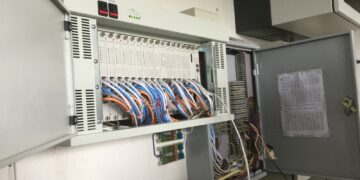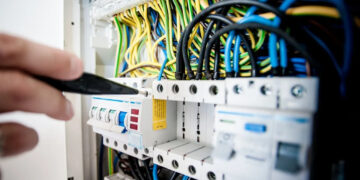In the modern world, which is characterized by technological advancement, electronic components are the basis of various equipment, products, and machinery, such as consumer electronics, machinery, and defense systems. The stock management of such parts is important for industries that produce, assemble, and provide electronic equipment services, as well as repair and refurbish electronic products.
This blog explains inventory management for electronic components, its issues, and the elementary steps to doing it correctly.
Basics of Inventory Control for Electronics Parts
Electronic components inventory management refers to planning, controlling, and implementing activities from strategic and operational levels so that there is optimum inventory for electronic components to satisfy customer demand. An effective inventory management strategy could involve having the right stocks to avoid a stock-out situation and storing the stock at a reasonable level while reducing storage expenses.
Key Factors In Inventory Management For Electronic Components
Material Requirements Planning (MRP): This is a procedure to determine what materials and components are necessary to meet production orders within a certain allotted time.
Supply Chain Management: To avoid production suffering from undue delays, electronic components need to be closely monitored in procurement and delivery.
Obsolescence: Electronics components are highly likely to become outdated; therefore the inventory may become obsolete.
Inventory Management Problems On Electronic Components
High Component Variability
The most practical way to deal with high component variability is through classification systems in electronic components. Component classification involves categorizing components based on their intended application and desired characteristics. This enables the business to organize components better for inventory management. It will also help them monitor stock and track problems concerning stock much more effectively and efficiently
Component Shortages
To avoid the risks of component shortages, businesses should maintain good relations with more than one supplier while keeping in touch with current ones. This will help them oversee disruptions in the supply chain and consequently change their inventory approach. Additionally, businesses should adopt a risk management model to control better supply chain risks, including risk identification and mitigation.
Environmental Concerns
Inventory management of electronic components can only be sufficient if the lifecycle of the business inventory is well monitored from manufacturing to disposal. Correct waste disposal and working with recycling facilities will guarantee that all dangerous materials are disposed of and recycled only as intended.
Technological Advances
Another reason that has increased pressure on the management of businesses is the growth of electronics since it depreciates electronic parts at the same rate that it can develop them.
Regulatory Compliance
Fields like aerospace and healthcare are very sensitive, and anything that enters them must be compliant and meet traceability requirements.
Quality Assurance:
All inventory parts must be standardized and meet the required specifications. Substandard parts may cause operation problems.
Proper Management of Electronic Components Inventory
- Leveraging Technology: Modern stock management systems include tracking, analyzing, and automating applications. A wide variety of technologies enable companies to track inventory, detect patterns, and set appropriate reordering points. Integrated solutions further incorporate enterprise resource planning (ERP), helping maintain coordination with other departments.
- Implement Supplier Relationship Management (SRM): An effective SRM system plays a critical role in facilitating supplier relations management by tracking lead time, delivery planning, and the price offered for products or services procured. This allows a company to easily acquire the components for its products without worrying about stockouts.
- Implement Just-In-Time (JIT) Inventory Management: JIT inventory management entails acquiring these parts at the same time when they are required to be utilized in production. That reduces storage expenses and eliminates the danger of having outdated components in the market. But, it needs strong signals of a good supply chain and proper prediction of demand.
- Utilize Forecasting Techniques: Therefore, it is necessary to identify future demand to determine the inventory level that should be expected or set for the components. Tools like regression analysis, moving averages, and exponential smoothing allow for better forecasting of primary demand fluctuations.
- Conduct Regular Audits: The list of electronic components in storage should be periodically checked for any inconsistencies; therefore, audits are important in ascertaining this. This assists businesses to discover where they went wrong and whether their current inventory management practices are efficient.
- Implement Lean Inventory Management: Lean inventory management is about minimizing waste to increase efficiency. This ensures that a business organization uses its resources efficiently and does not incur huge costs in holding inventory.
Conclusion
Effective inventory management of electronic components is important for the efficient performance of companies in the electronics trade. When these challenges are well understood, and the suggested best practices are implemented, the best stocks can always be maintained without necessarily incurring high costs. Inventory management in future electronics industries will require companies to update themselves with trends and recommendations to ensure that companies run efficiently. Information flow and updating strategies will be important for those companies that plan their further evolution and want to achieve high results!
























































